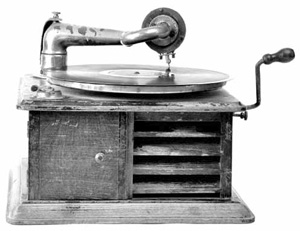The Beauty of Becoming Obsolete


I became an audiovisual professional largely because I love technology. I especially enjoy new technology because it provides an opportunity to learn something, and hopefully improve how I do things. Sometimes I’m nostalgic for the old, but usually the appeal of the new is too great. For every new product, though, there is another that has become obsolete. I started wondering about obsolescence and what it tells us about how technology emerges. When products become obsolete, is it always for the same reasons?
In the introduction to her book, “Obsolete,” Anna Jane Grossman said that something becomes obsolete “because it’s been supplanted by something that’s perceived as categorically better or faster or stronger or easier, or because the purpose it served has exited stage right.” This statement reveals the two ways products become obsolete—I call them “evolutionary” and “disruptive” obsolescence.
The evolutionary type of obsolescence is the most common. Most products become obsolete because a new product has improved on the old incrementally. Take the evolution of recording media, for example. The practice of recording is similar to what it has been since it was invented. Although the medium has evolved from tape to hard drive, the recording practice has stayed essentially the same. Evolutionary obsolescence has made reel-to-reel and cartridge tape (ADAT, etc.) outdated, but pressing “record” and playing back a track is the same as it ever was.
Disruptive obsolescence occurs when a class of technology declines because it is replaced with a new paradigm or practice. The author of “The Innovator’s Dilemma,” Clayton M. Christensen, has described some of the characteristics of truly disruptive technologies: 1) They enable less-skilled customers to do things that only the skilled could do previously, and 2) They target customers at the low end of a market. Although these types of new products don’t immediately reveal how they will cause obsolescence, in time, disruptive technologies dominate the conventional.

One example is email. I know well that email is still very prevalent in the business world, but for those under 20, texting, Facebook, and ooVoo have supplanted email for primary communications. These newer formats support a diverse set of communication styles. Basic, delayed-response, text exchanges (email) that require inconveniences such as “attaching documents” just won’t do for these “digital natives.”
Apple’s Airplay and mirroring technologies may be an example of a disruptive obsolescence on the horizon for AV systems. This is an innovation that has entered the market on a sub-$1,000 system (iPad + Apple TV), but it enables people to achieve things beyond AV systems that cost tens of thousands of dollars. I’ve seen some signs of this technology creeping into the business world already, and based on recent TV commercials, it is clear that this technology is also being adapted for non-Apple platforms.
This could possibly make a wide range of traditional AV hardware obsolete starting with computer video interfaces, AV switchers (the Airplay system uses a first-come, first-served way of determining the source selection), control systems, video playback devices, etc. This technology could make obsolete an entire class of systems that we’ve spent our lives providing and it does so by starting with “less-skilled customers” at the “low end of the market.” Change is coming and this time we’re not just talking about an evolution.
A daily selection of the top stories for AV integrators, resellers and consultants. Sign up below.
Paul Chavez (paul.chavez@harman.com) is the director of systems applications for Harman Pro Group. He is a usability evangelist and a futurologist. Chavez has designed a variety of audiovisual systems ranging from themed attractions to super yachts. He has also taught and written on the topics of interaction design, audiovisual design, and networking.
Obsolete AV— The Top Eleven
Here is a roundup of some of the audiovisual products that have been made obsolete in the last 20 years and whether I consider their obsolescence evolutionary or disruptive:
1. Slide Projectors (disruptive): Video projectors didn’t immediately replace slide projectors because it wasn’t simple to convert slides to video. This may represent a disruptive obsolescence since video is not exactly an incremental improvement over slides.
2. Oil-Based Light Valve Projectors (evolutionary): These very high light output video projectors that were used until contemporary ILA light valves were invented.
3. Overhead Projectors (evolutionary): Overhead projectors lasted longer than slide projectors and are still in use in many places, but video document cameras have mostly replaced them.
4. Magnetic Tape Recorders (evolutionary): Evolution at its best.
5. Electo-Luminescent Touch Panels (evolutionary): Remember the AMX EL panels? These became obsolete as color LED panels became affordable.
6. CRT Displays and Projectors (evolutionary): This type of display had a very long life but I’m not sad to see these beasts go away.
7. RS-232 and Infrared (evolutionary): I know there are still a few of devices that require RS-232 and serial IR control, but ethernet is a much better protocol.
8. Analog Class Audio Amplifiers (evolutionary): Switching amplifiers are the standard now for weight and efficiency trade-offs.
9. Most Disc Media (evolutionary): What is interesting about the obsolescence of hard media is the diversity of means that we now use to store and transport media today.
10. Plasma Displays (evolutionary): Although they are still sold at Best Buy, the ratio of LED to plasma offered is almost 10:1 and plasma accounts for only 19 percent of sales.
11. Analog Video (evolutionary): VGA is giving way to HDMI so it appears the DRM advocates have won—for now.
Feel free to email me, or comment if you can think of others.
—Paul Chavez
